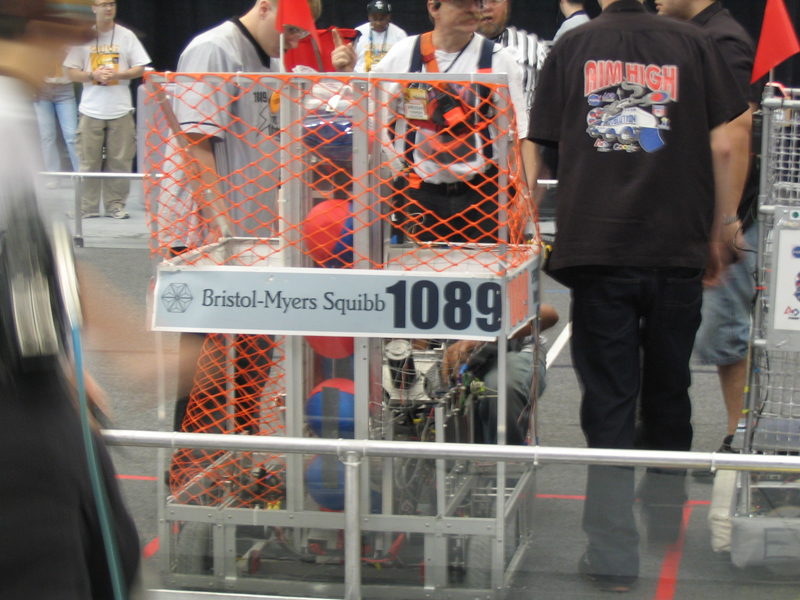
Silver Lightning – 2006
Game robot was designed for: Aim High
Brief Game description: Robots will attempt to launch balls into the center goal for 3 points. Robots or human players may score a single point by throwing or pushing balls into the corner goals. Balls must stay in the goal and exit via the exit chute to count for a score. Human players may retrieve balls from the corner goals and / or center goal storage container. Human players can replenish any alliance robot and can share balls to maximize their scoring opportunities. For more information on the game visit http://www.usfirst.org
Frame: Outwater Systems extruded aluminum.
Drive System: Four 9″ pneumatic wheels powered by a separate custom gearbox. Each of the four gearboxes provides a reduction of 1 to 13. The robot is extremely fast, with a max speed of 14 ft / s.
Manipulator: Four 6″ wheel shooting mechanism powered by two Mini Bike CIM motors. An elevator mechanism powered by a van door motor. It holds around 18 balls with rollers to collect balls from the floor. Also there is a basket that interacts with the elevator system, which holds around 15 balls.
New Concepts: Gearboxes, vision sensor, gear tooth sensor, inventor designing.
Components Discarded: Prototype gearbox, belt driven shooting mechanism.
The 2006 season was full of student designing and more complex technologies. Greater student motivation, involvement, and the usage of Autodesk inventor made pursuing such designs reality. Just like in 2004, the team faced a slow start after kickoff, mainly due to the intricacy of our gearbox and frame, however both finished products performed exceptionally. The shooting mechanism posed greater problems. Our initial shooter design was a belt drive system, which we worked on for over a week, and had to discard due to several weight and mechanical issues. Miraculously, in less than two days our current 4 wheel shooter was designed and assembled!
The use of inventor designing provided an easy way to validate machine parts for these pressing situations. We had to sacrifice our turret and angle adjuster in order to finish the robot within the 6 week limit. Meanwhile the programming team worked very hard learning about the camera tracking system, and the physics behind shooting the ball. The final code not only helped speed up camera tracking, it also simplified the robot design by reducing the need for changing angle or shooting speed. The team finished in time to practice, but less than 4 hours of practice showed us how much improvement was required, with only one day remaining! The last night of build season was full of discussions, redesigning and reassembling. And we still had to test our final product, as our first competition approached!
The significance for pre season research and prototyping was clearly visible this season. Our drive system and programming abilities continue to evolve each season. Each season the team is learning about new technology, while understanding the limits of what can be done in a short 6 week period.